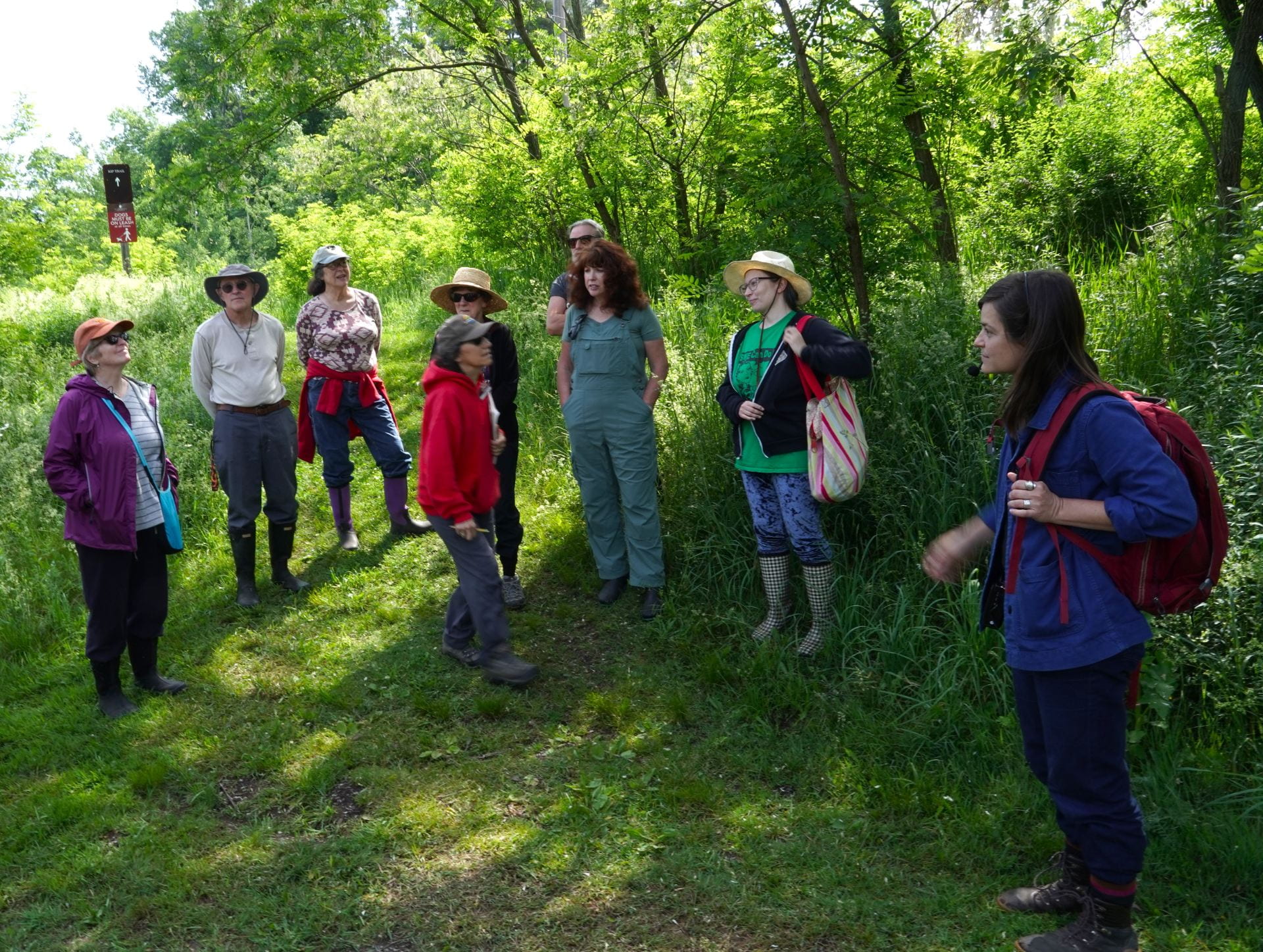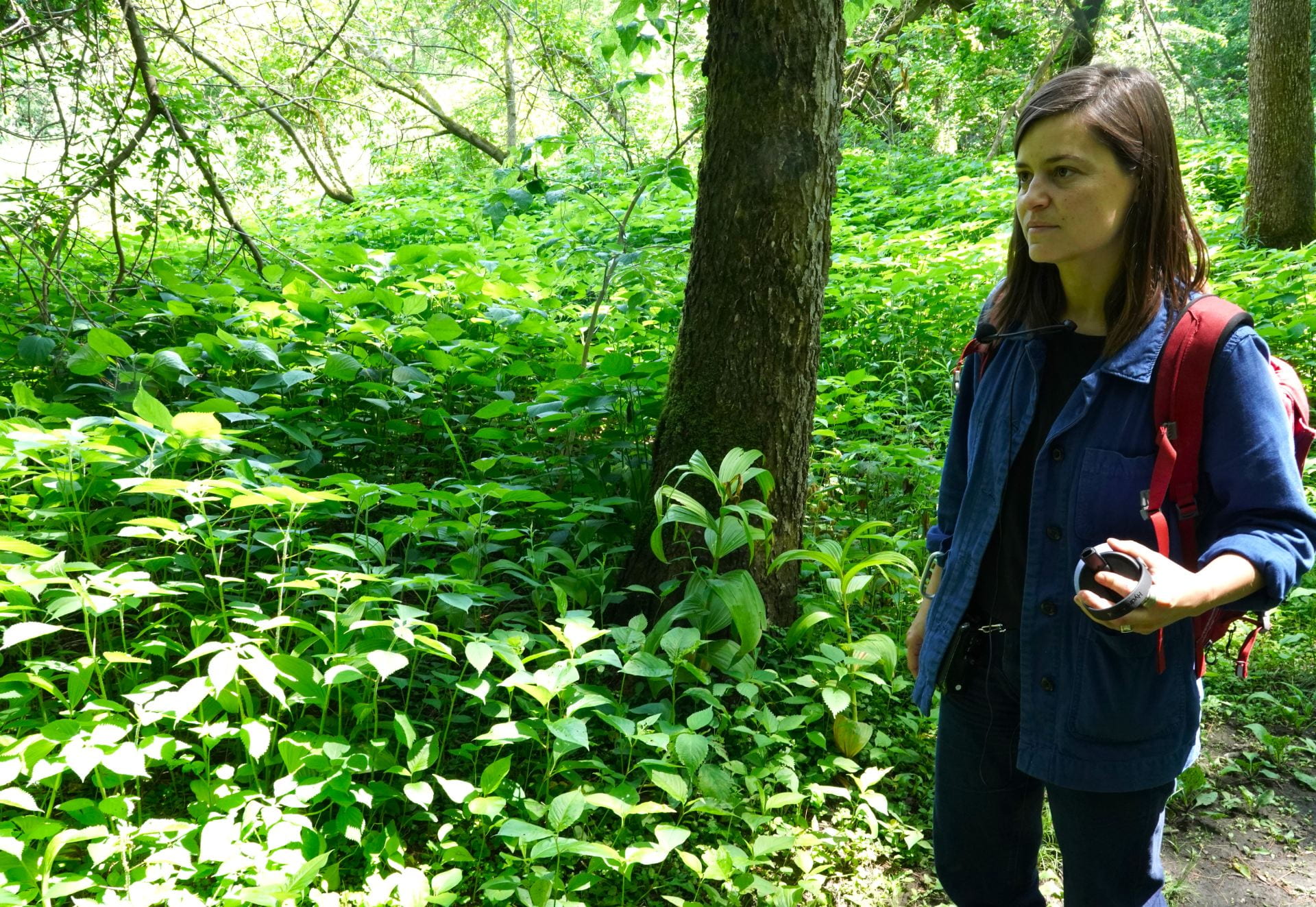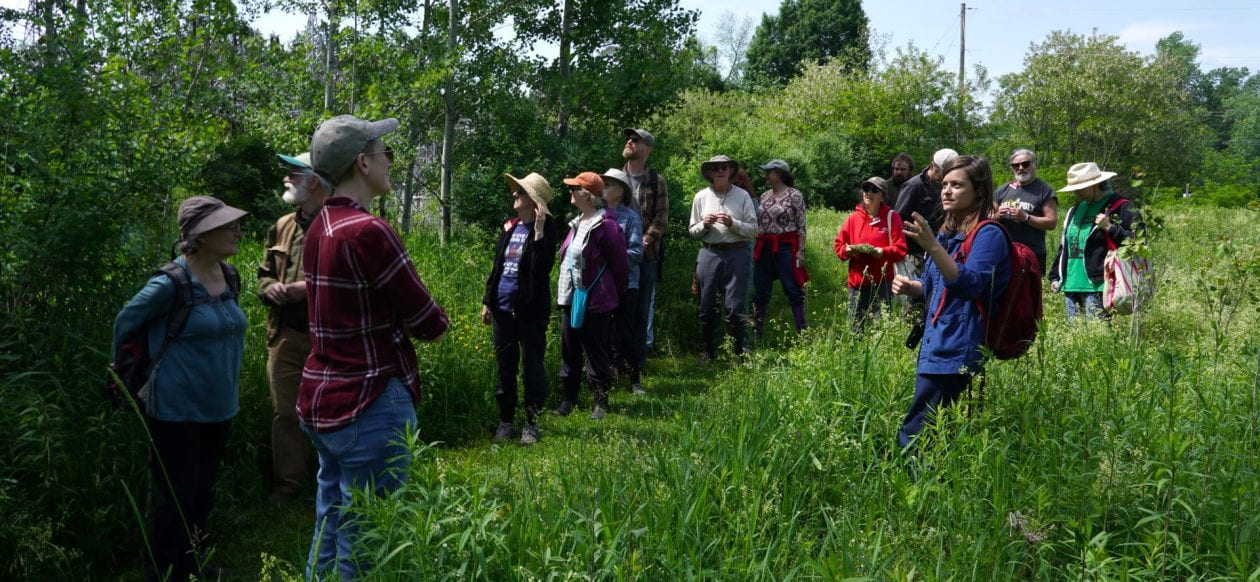The county’s Master Gardener Volunteers and several others with an interest in foraging wild plants recently met at a local trail to learn from Tusha Yakovleva. Tusha brings a lifetime of learning about local plants to her educational events, from her childhood in Russia and Scotland to her time spent exploring ethnobotany with native youth in the Adirondacks.
She started by guiding the group to use all of our senses when learning about a new plant. Though we used a plant known to most of us for this exercise, rather than skipping right to how it looks and what it’s called, we started with feeling the presence of the plant, noticing the sounds in the plant’s environment, the hairiness of the stem, the smell of the crushed leaves. We even considered what name we might give the plant based on our observations. Lastly, we landed on the common name, goldenrod, and its use as an immunity boosting tea. This guided exercise primed us for what Tusha called “slow and present observation” throughout our 2+ hour walk on St. Lawrence University’s Kipp trail.

Of the many plants we encountered, some I most enjoyed learning about (and tasting) included black locust flowers – which taste like alfalfa sprouts – and wood nettle, our native nettle with tasty leaves that can be dried for tea, eaten raw or cooked, or even dried and rehydrated.

I also tried the broccoli-like unopened flower buds of common milkweed – the only nontoxic species of milkweed. In addition to the flower buds, the young shoots are edible before the leaves unfurl in spring, and the aromatic flowers can be used to flavor drinks and baked goods. Read more In the presence of plants
